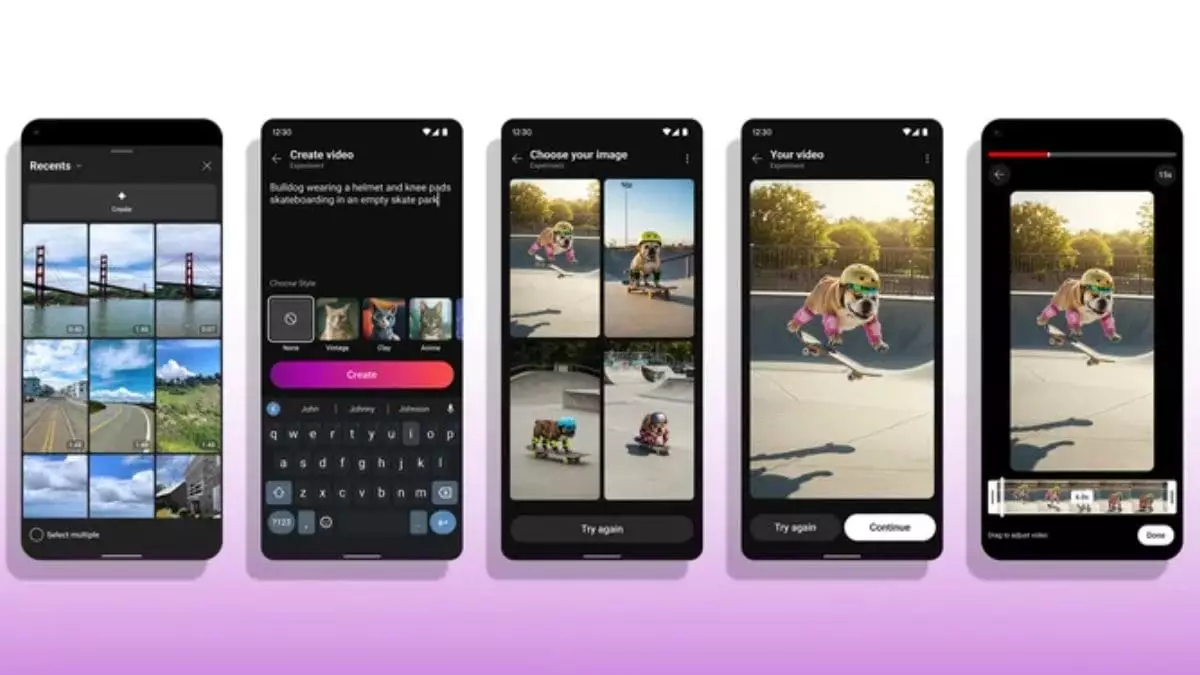YouTube has taken a significant step toward enhancing the creative capabilities of its platform by introducing an advanced artificial intelligence feature for content creators. As of Thursday, this new functionality includes the integration of Google’s Veo 2 AI model with the existing Dream Screen feature, revolutionizing how creators can engage their audiences and visualize their concepts. This move reflects YouTube’s continuous effort to empower creators and adapt to the evolving digital landscape.
Historically, the Dream Screen feature allowed users to incorporate AI-generated video backgrounds. However, with the arrival of the Veo 2 model, the capabilities of Dream Screen have expanded significantly. Now, content creators can generate complete standalone videos that can be specifically tailored for YouTube Shorts. For context, YouTube Shorts, which debuted in 2020, represents the platform’s foray into short-form vertical video content, catering to the growing trend of quick and engaging viewing experiences. By enabling users to produce standalone AI-generated content, YouTube opens up a new realm of possibilities for creative storytelling.
The mechanics of the new AI tool are straightforward yet powerful. Users can simply describe the video they envision, and the Veo 2 AI model will work to realize that vision. This text-to-video generator allows for unparalleled creativity by making it possible to create footage that might otherwise be difficult to source or produce. The arrival of Veo 2 marks an evolution in video generation technology; it was unveiled in December 2024 and distinguished itself from its predecessor through remarkable improvements in video detail and realism. The model is also designed to enhance cinematography, understanding nuanced elements such as genre conventions, lens types, and camera techniques.
Creating Videos with Veo 2
To utilize the Veo 2 capabilities, creators need to access the Shorts camera interface, where they can initiate the video generation process. The simplified steps include selecting the text input option, providing a descriptive prompt, and choosing specific styles and video lengths. This streamlined process is set to encourage more creators to explore the AI’s potential, thereby enriching the diversity and creativity of content on the platform.
YouTube is also proactive in addressing potential misuse of such advanced technology. Every AI-generated video will feature SynthID watermarks to minimize the risks associated with deepfake content. This measure is crucial in maintaining the integrity of the platform and ensuring that both creators and viewers can engage with content that remains trustworthy and authentic.
Currently, the new video generation feature is limited to users in Australia, Canada, New Zealand, and the United States. However, this selective rollout indicates YouTube’s intention to refine the technology based on user feedback before a wider release. As the landscape of digital content evolves, it will be fascinating to observe how these AI enhancements will shape creative expression and storytelling on YouTube in the months and years to come.
YouTube’s integration of the Veo 2 AI model into the Dream Screen feature heralds a new era for content creation, blending technology with creativity and paving the way for diverse and innovative storytelling.

